I was able to get five consecutive shots of this Black-billed Magpie as it took off from the top of its dome-shaped nest last spring on Antelope Island.
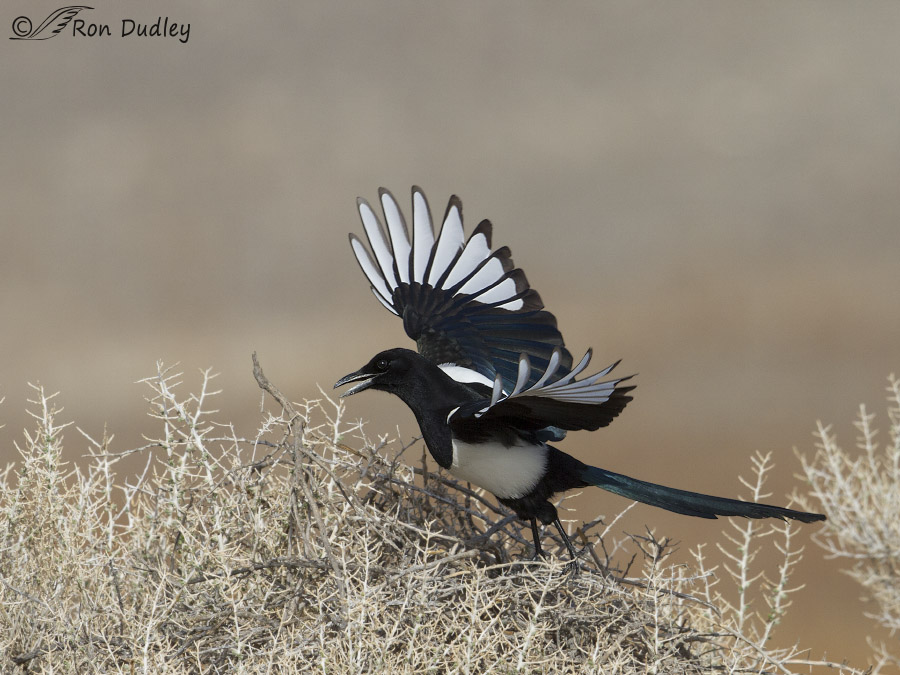
1/2500, f/6.3, ISO 500, Canon 7D, Canon EF500mm f/4L IS II USM, not baited, set up or called in
The nest was buried in this bush but here you can see the top of the dome at lower center. I had removed my teleconverter and was ready for take-off. This is the first wing-beat and I think the open bill of the bird lends a little extra personality to the image.
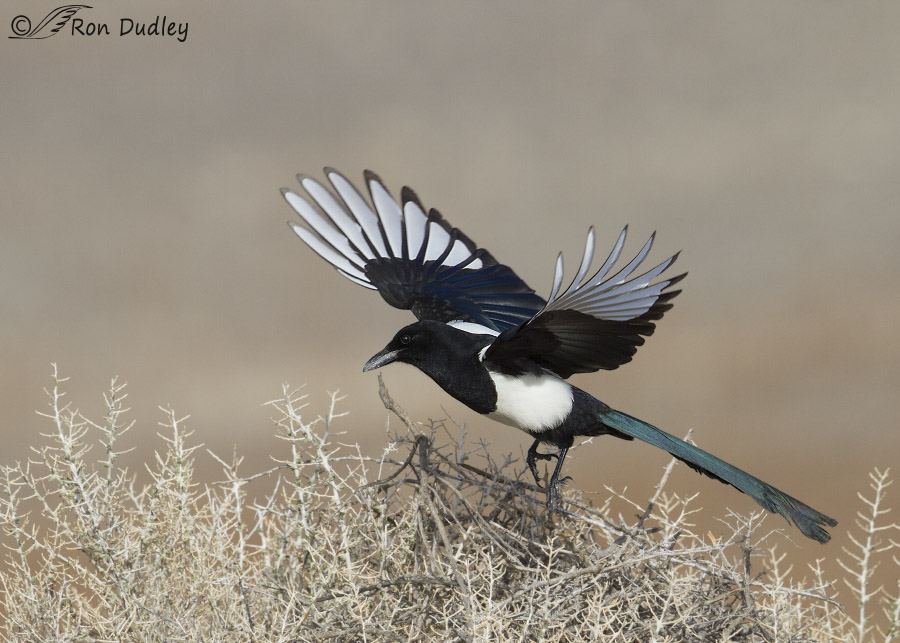
1/2500, f/6.3, ISO 500, Canon 7D, Canon EF500mm f/4L IS II USM, not baited, set up or called in
This was another one of those times when the speed of my shutter was synchronized with the flaps of the wings so the wings are in the up position in all five of the shots. Here there’s nice iridescence in the tail…
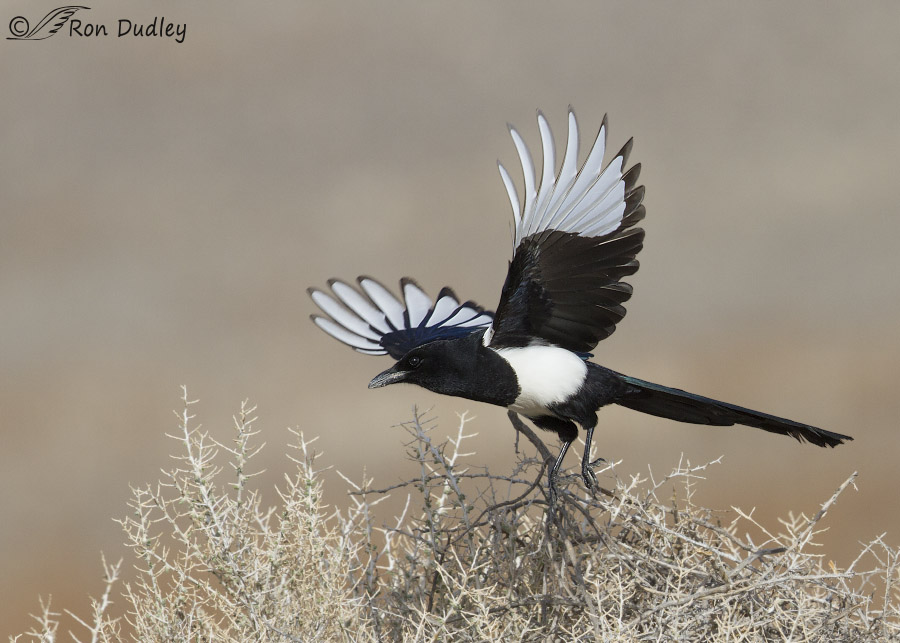
1/2500, f/6.3, ISO 500, Canon 7D, Canon EF500mm f/4L IS II USM, not baited, set up or called in
but it was mostly lost when the angle of the tail changed ever so slightly.
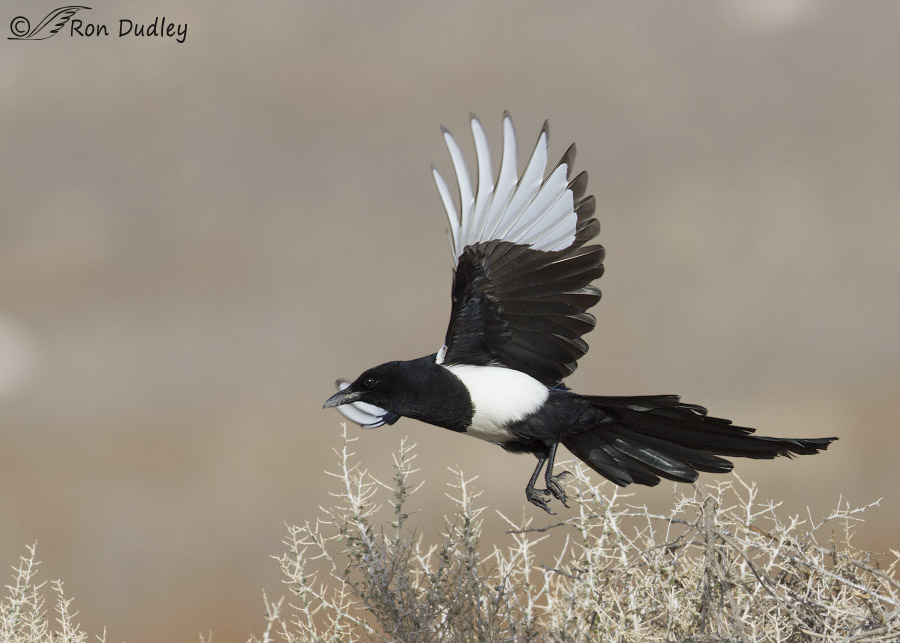
1/2500, f/6.3, ISO 500, Canon 7D, Canon EF500mm f/4L IS II USM, not baited, set up or called in
The magpie cleared the top of the bush…
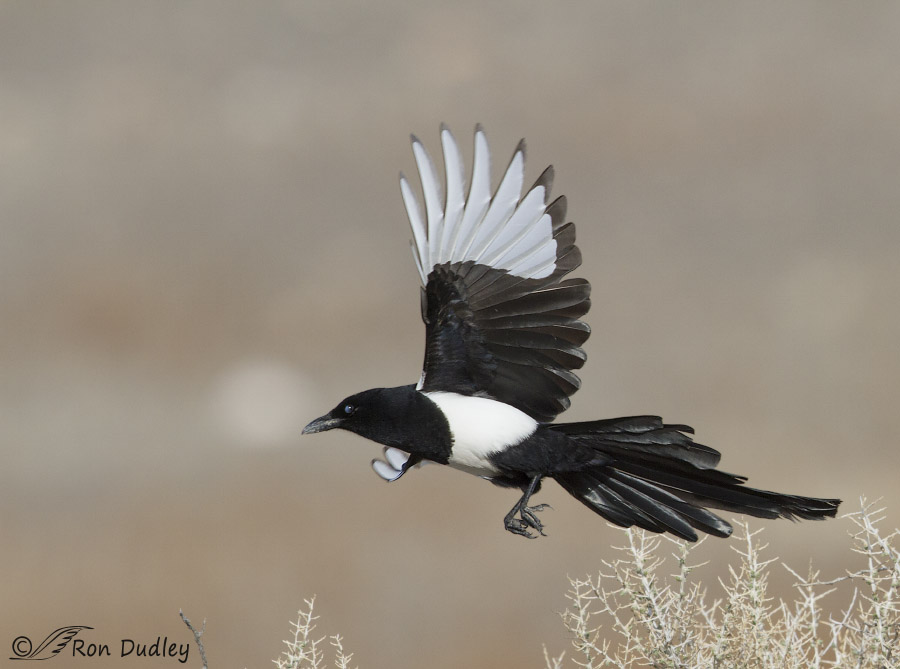
1/2500, f/6.3, ISO 500, Canon 7D, Canon EF500mm f/4L IS II USM, not baited, set up or called in
and then it was gone. Notice that in this image the magpie’s nictitating membrane is half closed (it slides over the eye from front to back).
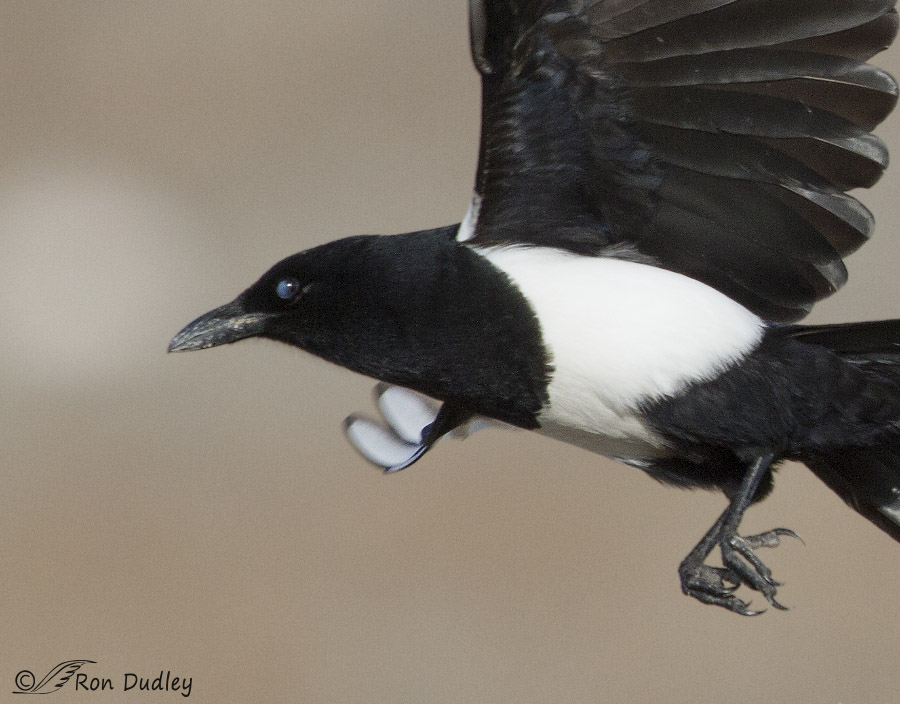
A much larger crop of the previous image reveals that there was just enough of the shiny cornea still uncovered by the nictitans to give me a catch light, but just barely.
Much to the aggravation of bird photographers, the membrane of many corvids is bright bluish-white (usually much brighter than it appears here) so it stands out like a sore thumb and they close it more often than many other birds do. There’s actually good reason for that. Many corvids are largely black so they don’t have the showy colors that many other species use for communication. One way they make up for it is by flashing their very conspicuous nictitating membranes to other birds, to signal aggression for example.
Another fascinating little avian natural history tidbit but it sure can make bird photography more challenging when shooting many corvids.
Ron


Another terrific series of images, Ron! A tutorial on how to get exposure correct for such a highly contrasting subject. Excellent photographs AND a neat educational tidbit!
Gorgeous bird, and photos!
Thank you, Cindy.
A dapper bird! Many psittacines also use their eyes to indicate mood. Pinpoints or when they are dilating rapidly mean you need to count your fingers before and after. 😀
Very interesting, Arwen! I didn’t know that.
Wonderful shots of one of my favorite (thanks to you) birds…they are so elegant!!! Great illustration of how nicitating membrane slides over the eye to protect it…..so many of your photos have fantastic educational value…
“so many of your photos have fantastic educational value…”
Thanks very much, Patty. That means a lot.
Beautiful shots! When I first saw the last photo (before cropping) it reminded me of myself when rock scrambling, with an extra pair of glasses hanging around my neck. It didn’t take too much to realize that I was looking at the right wing, but it was a fun illusion.
“with an extra pair of glasses hanging around my neck”
Ha, reminded me of me, Susan. I’m blind enough (getting old, you know) and sensitive enough to light (a curse of blue eyes) that I’m a mess without both my reading glasses and my sunglasses. More than once Mia has laughed mercilessly at me for having a pair of sunglasses on the top of my head, another pair where they should be worn and two (count’em, TWO) pairs of reading glasses hanging from my shirt.
I’d rather have too many than too few…
Wow! That’s a lot of pairs of glasses! I rarely wear sunglasses, especially if I’m trying to do any photography, but because of old age I usually wear trifocals. Those make climbing on rocks difficult, so I got a pair of single vision glasses just for the rocks. I hate having to change them when I want to see something up close – the distance vision glasses help with balance, but are useless for seeing details. Even though it’s a pain to have to deal with more than one pair of glasses, I’d rather have to deal with that than the alternative… Still too much to do, see and learn in life.
“Wow! That’s a lot of pairs of glasses!”
I’m just a dork sometimes, Susan!
What a delightful sequence. Your magpies are very much more ‘decorative’ than ours which have no irridescence and whose markings are a great deal less detailed. I love ours just the same though – for their feistiness and for a truly marvellous call.
Th nictating membrane made me think of cataracts, and I am more than happy to know it is protective/display rather than an issue with the bird’s vision.
“and whose markings are a great deal less detailed”
Thank you, Elephant’s Child. Our magpies usually don’t show a lot of detail either – those blacks are a light-sink. You have to get the light just right on them to get much detail at all. And then the whites are often too bright. An exposure nightmare…
Hi Ron,
Very, very nice! I really like the images that show the primaries in full display. Since they caught my eye, I wonder if they play a similar role in nature as well…
In any event, beautiful pictures of a beautiful bird!
Thanks!
Cheers,
Dick
Who knows, Dick – wouldn’t surprise me, though. I suspect there’s a lot about corvid behavior in particular that we may never fully understand. Thank you.
Amazing wonderful shots Ron! Thanks for sharing!
Charlotte
Thank you, Charlotte.